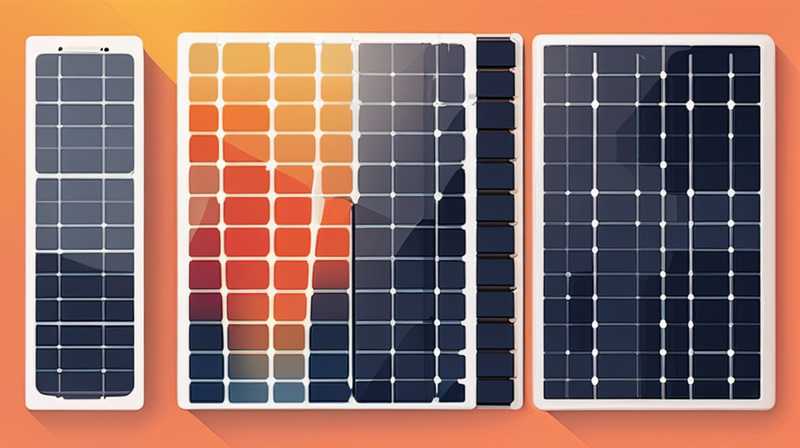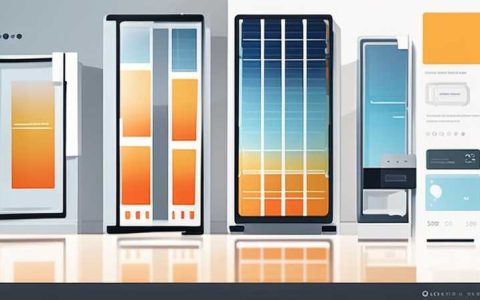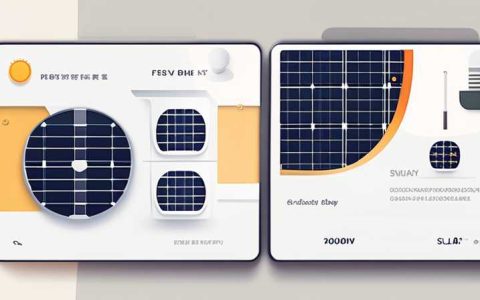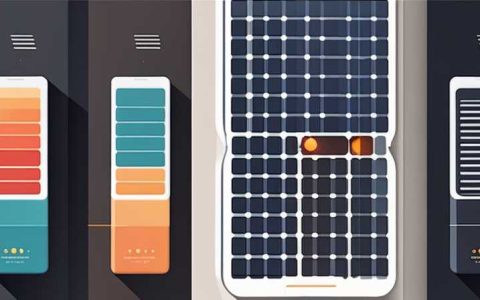
1. The average price of solar panels ranges from $15,000 to $30,000 for a residential installation, largely influenced by factors such as system size, installation complexity, and geographic location. 2. Cost per watt typically hovers between $2.50 to $3.50, which directly correlates to the efficiency and quality of the panels selected. 3. Incentives and rebates can significantly reduce upfront costs, allowing potential buyers to recover their investment faster.
The intricacies of solar panel pricing necessitate a multifaceted examination, whereby each contributing aspect will delineate the pathway toward more informed consumer decisions. Not only do regional economic variations play a pivotal role, but consumer preferences and technological advancements concurrently shape this market.
1. UNDERSTANDING SOLAR PANEL COSTS
When navigating the realm of solar energy, comprehending the financial implications of installing solar panels becomes paramount. A multitude of variables dictate the ultimate pricing structure that homeowners may encounter. The first determinant to consider is the size of the system, which directly correlates to energy requirements. For instance, a household that consumes more electricity will typically necessitate a larger array of panels and, consequently, incur higher costs.
Surrounding this primary factor, installation complexity also emerges as a critical influence on project pricing. The geographical context in which the panels are installed may necessitate specific adjustments that elevate labor costs. Furthermore, unique roof configurations or structural challenges inherent to a residence can inflate expenses involved in the installation process. These considerations amalgamate into the overall financial framework that prospective solar energy users must navigate.
2. COMPONENTS OF SOLAR PANEL SYSTEMS
Diving deeper into solar panel systems, it becomes essential to dissect both the materials and technologies that underpin these installations. Various types of solar panels—namely monocrystalline, polycrystalline, and thin-film—feature distinctive price tags based on their efficiency levels and manufacturing costs. Monocrystalline panels, for instance, often come at a premium due to their higher efficiency ratings, allowing homeowners to maximize energy output within a limited space.
Array components extend beyond just the panels themselves; the inverter, mounting hardware, and any necessary electrical equipment also factor significantly into the overall expenditure. Inverters transform direct current into alternating current, making them indispensable for residential consumption. The choice between string inverters and microinverters can create variances in cost and overall energy efficiency. Each component’s selection contributes tangibly to the project’s total financial commitment, thereby warranting thorough analysis.
3. INFLUENCING FACTORS ON SOLAR PANEL PRICING
Despite having a clearer understanding of the components involved, other influencing factors play substantial roles in determining the final cost. Specifically, local incentives and the political environment surrounding renewable energy initiatives can dramatically affect pricing structures. Many regions offer tax credits, rebates, and grants, making the investment more alluring. These financial incentives may lessen the burden on homeowners by subsidizing a portion of the installation costs, effectively reducing the out-of-pocket expenditure.
Conversely, fluctuations in the global supply chain can alter pricing dynamics. Recent trends demonstrate how raw material shortages or tariffs can escalate costs, generating a need for consumers to remain vigilant regarding market developments. Stagnation or volatility in solar panel prices may prompt prospective buyers to consider timing their investments strategically—waiting for favorable market conditions before proceeding forth.
4. LONG-TERM FINANCIAL IMPLICATIONS
Beyond initial expenses, the long-term financial implications of solar panel installation warrant serious contemplation. Homeowners can anticipate substantial energy savings over the lifespan of the system, which typically spans 25 years or more. This continuous savings trajectory necessitates that individuals assess their energy consumption patterns to establish a comprehensive understanding of potential future costs.
Furthermore, increasing property values often accompany the installation of solar panels. Numerous studies indicate that homes equipped with solar energy systems tend to sell at a premium compared to similar homes without such enhancements. This added resale value can significantly bolster long-term asset worth, tailoring solar investment as an appealing pathway not only for energy savings but also for enhanced financial benefit.
5. SIZE AND EFFICIENCY RELATIONSHIP
The size of a solar panel system intricately ties to its efficiency performance. In discussions about cost-to-efficiency ratios, greater system sizes do not always equate to greater energy output relative to investment. High-efficiency panels, while priced higher, produce more electricity in limited space, countering disadvantages in upfront costs. Therefore, homeowners must confront critical decisions about the balance of initial expenses versus long-term benefits.
When evaluating system size and efficiency, a careful assessment of energy consumption patterns is necessary. Factors such as geographic location and seasonal energy use significantly affect electricity requirements, necessitating a personalized approach to system sizing. Reliable estimations grounded in local resource availability—such as sunlight exposure—can guide consumers toward making informed selections that align both operational efficacy and financial prudence.
6. NAVIGATING INSTALLATION COSTS
Installation costs constitute another significant aspect of solar energy system pricing—often comprising 10% to 20% of the total cost. The variables associated with labor include contractor fees, local labor rates, and the complexity involved in the installation process. Quality installers may charge a premium for their expertise, which ultimately translates to a higher quality and more efficient installation.
Exploring installation methods also proves vital. Ground-mounted systems, for instance, may incur different labor expenses than roof-mounted options. Additionally, obtaining permits and electrical inspections can further augment costs, compelling consumers to consider the total financial obligation beyond merely purchasing the solar panels themselves.
7. MAINTENANCE AND REPLACEMENT COSTS
Ongoing maintenance requirements form an essential part of the financial equation for solar panel systems. Generally, solar panels require minimal maintenance, yet annual inspections ensure optimal performance levels. Cleaning panels regularly to remove dust and debris is critical for maintaining efficiency, particularly in areas subject to significant precipitation or wind.
Furthermore, one’s consideration must extend to the eventual necessity for system replacements. Inverters typically have a shorter lifespan—generally 5 to 15 years— contrasting the longevity of the solar panels, necessitating budgeting for potential inverter replacements. Aspects of maintenance and replacements illustrate the necessity of a comprehensive financial plan encompassing both initial and enduring expenses related to solar panel ownership.
8. MAKING SENSE OF FINANCING OPTIONS
Financing options present diverse pathways for acquiring solar systems, allowing consumers to choose solutions that align with their financial capacities. Cash purchases provide unequivocal ownership, eliminating the need for future payment obligations. Meanwhile, solar loans become an increasingly popular alternative, permitting homeowners to finance their systems while benefiting from immediate energy savings.
Moreover, leasing arrangements can yield considerable advantages, particularly for those wary of upfront investments. Through leasing agreements, homeowners can engage with solar energy without purchasing outright, albeit with potential restrictions on tax benefits and system ownership. Each financing mechanism carries unique implications, urging potential buyers to explore available avenues and assess how these align with their long-term financial goals.
9. THE IMPACT OF REBATES AND INCENTIVES
Plenty of incentives are accessible to homeowners pursuing solar panel installations. Federal tax credits—most notably the Investment Tax Credit (ITC)—enable homeowners to claim a substantial percentage on their federal tax return based on the total installation cost. This provision can significantly alleviate financial burdens, making solar investments increasingly appealing.
Additionally, state and local governments frequently offer their own incentives aimed at encouraging renewable energy adoption. These can manifest as cash rebates, tax exemptions, or performance-based incentives that reward energy production. However, the availability and terms of these incentives can vary significantly based on geographic location, necessitating thorough research to identify applicable programs.
10. ASSESSING THE ROI OF SOLAR ENERGY
As potential buyers evaluate their commitment to solar energy, measuring the return on investment (ROI) emerges as crucial. Homeowners must analyze potential savings accrued through diminished electricity bills against the installation costs. Various online calculators can assist in projecting future savings based on installation expenses, energy usage, and local utility rates.
Furthermore, assessing environmental benefits may add an intangible component to ROI. Many individuals derive satisfaction from knowing that their investment contributes to reduced carbon emissions and encourages a transition toward greener living. These environmental considerations can inspire homeowners to pursue solar energy adoption, bringing together financial and ethical imperatives into a valuably rewarding choice.
COMMON INQUIRIES REGARDING SOLAR PANEL COSTS
HOW MUCH ARE SOLAR PANELS?
The installation of solar panels generally ranges between $15,000 and $30,000 for residential setups. This difference can often be attributed to factors such as geographic location, type of solar technology, system size, and specific installation intricacies. Those seeking quotes typically find they consist of both material and labor costs, with costs typically assessed on a per-watt basis, averaging from $2.50 to $3.50.
Many consumers overlook available incentives, as federal and state tax credits can significantly lighten the financial load. Prospective buyers should engage in research to find any programs tailored to their region since financial assistance can dramatically influence overall costs. Moreover, assessing expected energy savings may provide comprehensive insights regarding the long-term benefits offsetting initial expenses.
WHAT ARE SOLAR PANEL REBATES AND INCENTIVES?
Assessing available solar panel rebates and incentives should be an initial step in any solar energy journey. These initiatives can impact installation costs substantially, with many regions offering state-specific incentives facilitating financial relief for homeowners. Rebates can manifest as a percentage of the total costs, directly applied to installation expenses or as tax credits when filing federal and state taxes.
Nevertheless, these programs are often subject to annual budgets and specific eligibility criteria. Comprehensive research will pinpoint which incentives apply in an individual’s area, permitting an informed approach regarding financial commitments. The exploration of incentives not only enhances affordability but also illustrates local and national support for advancing renewable energy solutions.
HOW CAN I FINANCE SOLAR INSTALLATION?
When considering financing opportunities, customers encounter various options catered to their preferences and financial situations. Cash purchases provide immediate recognition of ownership but may not be feasible for all. Consequently, solar loans enable homeowners to stretch the costs over time while enjoying immediate energy saving benefits. Loan terms vary widely, causing variations in monthly payments based on borrower strength and creditworthiness.
An increasingly popular model is leasing, enabling individuals to access solar energy without outright purchasing a system. Though it can be less expensive than outright purchasing, leasing may limit potential tax benefits generally available to owners. Prospective buyers must evaluate which financial mechanisms align best with personal circumstances, reflecting both current financial capability and long-term energy aspirations.
In light of the multifaceted nature of solar panel pricing, it becomes apparent that an informed approach equips prospective owners with the essential knowledge needed to navigate this decision process effectively. Understanding the various elements impacting costs—installation methods, financing strategies, available incentives, and expected ROI—enables informed purchases, allowing homeowners to reap the advantages of solar energy fully. Each component of this decision involves balancing initial investments with long-term benefits, enriching one’s financial position while concurrently enhancing sustainability efforts. The unfolding landscape of renewable energy options underscores the importance of meticulous research and thoughtful planning, ultimately making solar energy an increasingly attractive avenue for households seeking energy independence and environmental stewardship. As the market evolves, potential customers should remain vigilant in seeking knowledge to harness the transformative impact of solar technology on their energy consumption and financial portfolios.
Original article by NenPower, If reposted, please credit the source: https://nenpower.com/blog/how-much-does-a-solar-panel-cost/










